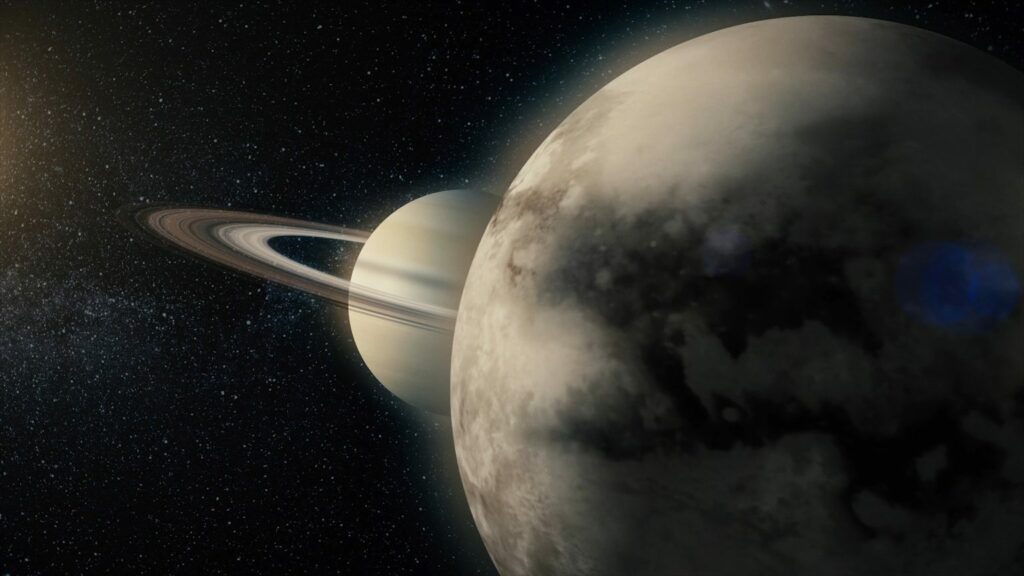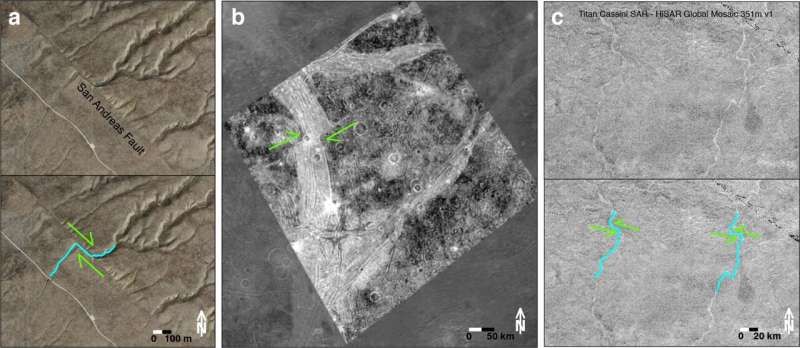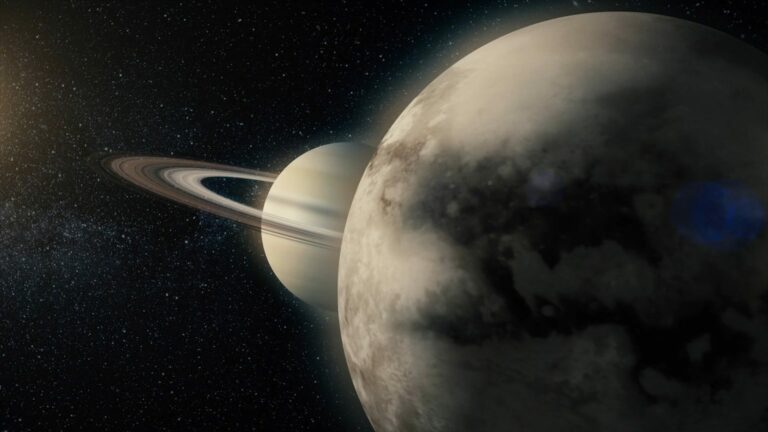Possible Indicators of Extraterrestrial Life Found in the Fractures of Icy Moons Orbiting Jupiter and Saturn
Such faulting can promote the interchange of surface and subsurface materials through shear heating processes, potentially establishing environments favorable for the development of life.
Researchers from the University of Hawaii at Mānoa are examining specific geological features on the largest moons of Jupiter and Saturn that could serve as promising locations for the potential emergence of life beyond our planet.

Led by the University of Hawaii team, the investigation focuses on “strike-slip faults” on Ganymede, Jupiter’s largest moon, even surpassing the size of the planet Mercury, and Titan, Saturn’s moon. In these faults, fault walls move horizontally past each other, akin to the famous San Andreas fault on Earth, creating large cracks or rifts in the ground.
Scientists propose that these seismic features are generated on the icy moons when they orbit their gas-giant parent planets. The gravitational forces of the gas giants produce tidal forces that compress and stretch the moons, causing the surfaces of these natural satellites to flex. The elliptical orbits of these moons around Jupiter or Saturn lead to varying distances from their respective planets, resulting in inconsistent tidal forces that can be intensified when the moons are closer.
Liliane Burkhard, the lead author of the research and a scientist at the Hawaii Institute of Geophysics and Planetology, explained, “We are interested in studying shear deformation on icy moons because that type of faulting can facilitate the exchange of surface and subsurface materials through shear heating processes, potentially creating environments conducive for the emergence of life.”
Strike-slip faults on Titan
Titan, Saturn’s moon, boasts surface temperatures plummeting to approximately minus 290 degrees Fahrenheit (minus 179 degrees Celsius), an extreme cold where water takes on the characteristics of rock, capable of cracking, deforming, and ultimately forming faults.
Cassini, NASA’s spacecraft, revealed insights during its flybys of Titan, indicating the potential existence of liquid water oceans beneath the moon’s thick ice shell. Notably, Titan stands out as the only moon in the solar system with a dense, Earth-like atmosphere, featuring a hydrological cycle akin to Earth’s with methane clouds, rain, and flowing liquids forming lakes and seas. This unique combination positions Titan among the select celestial bodies in our solar system considered potentially habitable — at least for life as we currently understand it.
Scheduled for launch in 2027, NASA’s Dragonfly mission aims to reach Titan by 2034. Equipped with a rotorcraft lander, the mission seeks to explore the frigid surface of Titan, searching for potential signs of biological activity. While bug-eyed aliens might not be on the agenda, the team is hopeful that the lander can identify chemical building blocks of life familiar to us.
The Dragonfly mission plans to land initially in the Selk crater area on Titan, a region of particular interest to Burkhard and her team. Their research, assessing stress on Titan’s surface due to tidal forces, extends beyond the search for extraterrestrial life. They also investigate whether the Selk crater area is prone to shear deformation, essential information for determining the feasibility of Dragonfly’s landing.
Burkhard stated, “While our prior research indicated that certain areas on Titan might currently undergo deformation due to tidal stresses, the Selk crater area would need to host very high pore fluid pressures and a low crustal coefficient of friction for shear failure, which seems improbable. Consequently, it’s safe to infer that Dragonfly won’t be landing in a strike-slip ditch!”

Burkhard and her colleagues delved into the geological history of Ganymede, Jupiter’s moon, to unravel the icy celestial body’s tale of tidal stress. Their focus centered on Philus Sulcus, a bright region in the northwest of Ganymede characterized by parallel sets of fractures.
Through meticulous examination of high-resolution observations, the researchers discerned varying degrees of tectonic deformation in bands of light terrain intersecting each other. The cross-cutting patterns suggested to Burkhard and her team three distinct eras of geological activity — ancient, intermediate, and young.
“I examined strike-slip faulting features in intermediate-aged terrain, and they align with the slip direction predicted by modeling stresses from a higher past eccentricity,” Burkhard explained. “Ganymede may have experienced a phase with a considerably more elliptical orbit than its current state.”
Exploring different sections of Philus Sulcus, the team observed slip features with diverse alignments, suggesting that processes other than high tidal stress might have contributed to their formation. Burkhard noted, “So, Ganymede has undergone a tidal ‘midlife crisis,’ but the origins of its latest ‘crisis’ remain mysterious.”
The geological inquiries conducted by Burkhard’s team and others play a crucial role in guiding spacecraft missions targeting exploration of solar system moons like Titan and Ganymede. Burkhard emphasized, “Missions such as Dragonfly, Europa Clipper, and ESA’s JUICE will refine our modeling approach and can help identify the most intriguing locations for lander exploration and potentially accessing the interior oceans of icy moons.”
The team’s research is published across two papers in the journal Icarus.
Do not forget to share your opinion with us to provide you with the best posts !




0 Comments